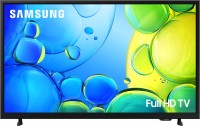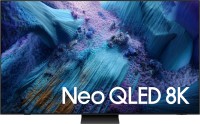How to choose a TV diagonal and resolution for your room?
We independently test the products and technologies that we recommend.

What happens if you choose the wrong diagonal?
Choosing a TV size isn't critical, as long as it's not too large or small. Otherwise, you will have to put up with some inconveniences in the future.
Choose a TV that's too large, and your eyes may strain from sitting too close to the expansive screen. It's akin to getting front-row seats at an IMAX 3D show only to spend the entire movie fixated on Gandalf's giant beard protruding from the screen. Additionally, you'll find yourself regularly tilting your head to ensure everything on the screen is within view.
Choosing a TV with a modest diagonal forces you to squint at diminutive football players or strain to read barely noticeable text from the sofa. Even grand Hollywood blockbusters, crafted with millions of dollars and hundreds of man-hours, lose their impact compared to a skirmish between two pigeons fighting for a piece of bread.
Buy larger not to return to the store
 |
To begin with, a small educational programme: the size of the screen is determined by its diagonal, that is, the distance between the lower left and upper right corners. It is usually measured in inches. And one inch equals 2.5 centimeters.
Choosing a new TV can be simplified based on numerous studies and social media surveys revealing that dissatisfaction with the old TV's diagonal is the primary reason for upgrading. Whether for a virtual cinema or a PlayStation game room, the desire is always for a larger screen. The seasoned advice for movie enthusiasts is straightforward: "The screen can vary in size, but if your budget permits, go for the largest one."
A classic case: someone believes a 42" TV is perfect for their small room, buys it, installs it, and everything seems fine until they visit a friend with a 55-inch OLED boasting 4K resolution in the same space. Witnessing the spectacular visuals on the larger screen, especially during a gaming session on PlayStation 4's Uncharted, leaves a lasting impression. The friend, now back home with their 42" TV, can't shake the lingering thought, "I should have taken bigger". No wonder TV manufacturers often capitalize on this theme in their advertising.
How to choose a diagonal wisely
 |
The "take larger" approach has enough critics and opponents. Just observe a typical cinema hall where the most comfortable and premium seats are deemed to be in the middle — optimal distance from the screen. Hence, a more logical approach would be to select the perfect diagonal based on the room size.
Every TV comes with a recommended viewing distance and optimal angle. Maximum immersion in on-screen content happens when the eyes are at the center or slightly above the screen's center, with the diagonal covering 40% of your field of view. According to the classical formula, the distance from the viewing spot to the screen should be 2.5 – 3 times its diagonals. For instance, in a room where the distance from the sofa to the screen is exactly 3 meters, the optimal diagonal would be 47". To derive this, convert meters to centimeters (resulting in 300 cm), divide by 2.5 diagonals, and then further divide by 2.54 to convert the measurement to inches.
 |
The classic formula is aptly named for standard resolutions like HD and Full HD, but with the advent of larger panels and 4K resolutions, clarity is significantly improved, even at close distances where blurring or graininess is not visible. Samsung suggests a simpler approach for 4K panels: multiply the TV diagonal by 1.2 and convert the result into meters. For instance, 75-inch TV corresponds to a recommended distance of 2.3 meters. Similarly, a 65-inch panel is best viewed from a two-meter distance. It's worth noting that these are recommendations from a TV-selling company, and whether to follow them is entirely up to you.
 |
Instances where rules don't apply
The mentioned formula is better suited for a home cinema, ideal for high-resolution movie watching or console gaming. However, for TVs in spaces like the kitchen, the mantra is "less is better." Setting up a 40-inch TV in the kitchen involves finding a spot and dealing with a bracket to support its weight. For an average modern kitchen (15 square meters), compact 32-inch panels are popular, while smaller kitchens often opt for simple 28" TVs. Intermediate options with 28" exist but haven't gained widespread popularity, with only a limited market presence.
Similarly, when selecting a "classic TV" for a mix of news channels, reality shows, cop dramas, and moderately mediocre soap operas, practicality comes to the forefront. Given that not all Eastern European channels have transitioned to Full HD resolution, some still feature black frames, especially with outdated 4:3 ratios. In this context, a straightforward TV panel with Full HD resolution and a diagonal ranging from 32 to 42 inches fits the bill perfectly as a "classic TV".
How important is the resolution and which one to choose?
 |
The higher the resolution of the display, the more pixels it is able to reflect ― accordingly, its resolution is higher, and the pixel structure of the image is less noticeable. That's why when buying a modern TV, everyone recommends 4K, because even with a very large diagonal, the pixel grid on it needs to be viewed with a magnifying glass. One more conclusion can be drawn from this rule: a TV with a smaller diagonal and a high resolution is better than the other way around. However, marketers are against it, so 4K is now being added to every TV.
There are 4 main types of resolution:
Let's take an average room in which the distance from the viewer to the TV is 2 – 2.5 metres. For a TV with HD resolution, the optimal diagonal at this distance will be 32". If you didn't have any big-eyed elf archers in your family, you are unlikely to see individual pixels at this distance. For Full HD, the perfect diagonal will be between 32" and 42".
The enhanced 4K resolution significantly elevates picture quality, commonly featured in 49-inch diagonal panels. While HD suffices for favorite shows, opting for Full HD or 4K is preferable for movies with special effects. In contemporary settings, TVs with a diagonal exceeding 42 inches, primarily in 4K, are the preferred choice for such purposes.
A couple of additional tips on TV placement
 |
Having determined the optimal viewing distance, here are a couple of final tips. Position the TV so that the center of the screen aligns with eye level or slightly higher. For an average sofa, whose height is roughly the same, this places the TV's center at around a meter high. Consider adjusting for sofa and personal height. Hanging it too high strains the eyes, while placing it too low leads to neck discomfort.
Position the TV directly in front of the viewer; placing it at an angle requires constant head twisting, risking numbness in neck muscles. Avoid installing the panel near a window as it results in a dim, glare-filled picture, especially in dark scenes. Adjusting brightness and backlight levels to the maximum becomes necessary, posing an additional strain on the eyes.
Articles, reviews, useful tips
All materials










































































